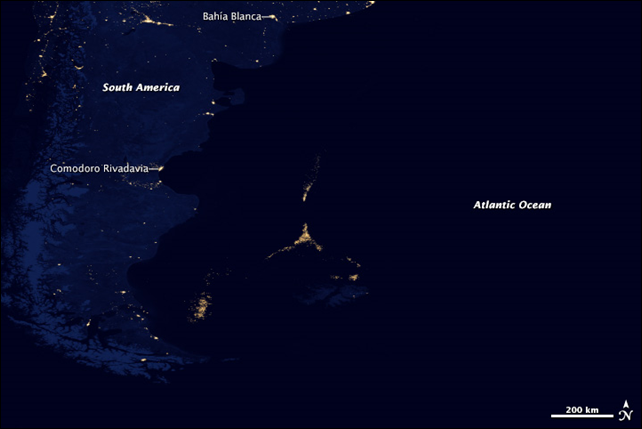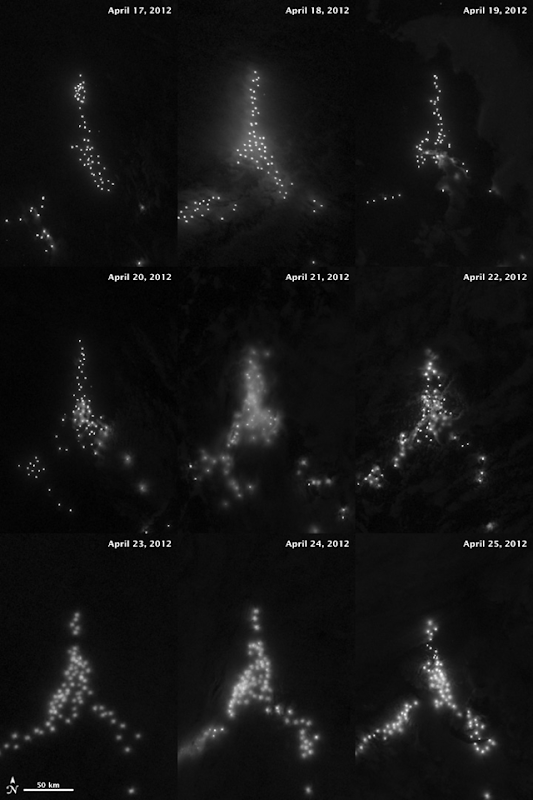Image of the Day: Satellite view of squid poaching operations, April 2012
By Michael Carlowicz; design by Paul Przyborski
22 October 2013 (NASA) – About 300 to 500 kilometers (200 to 300 miles) offshore, a city of light appeared in the middle of the South Atlantic Ocean. There are no human settlements there, nor fires or gas wells. But there are an awful lot of fishing boats. Adorned with lights for night fishing, the boats cluster offshore along invisible lines: the underwater edge of the continental shelf, the nutrient-rich Malvinas Current, and the boundaries of the exclusive economic zones of Argentina and the Falkland Islands. The night fishermen are hunting for Illex argentinus, a species of short-finned squid that forms the second largest squid fishery on the planet. The squid are found tens to hundreds of kilometers offshore from roughly Rio de Janeiro to Tierra del Fuego (22 to 54 degrees South latitude). They live 80 to 600 meters (250 to 2,000 feet) below the surface, feeding on shrimp, crabs, and fish. In turn, Illex are consumed by larger finfish, whales, seals, sea birds, penguins … and humans. The fishery is fueled by abundant nutrients and plankton carried on the Malvinas Current. Spun off of the Circumpolar Current of the Southern Ocean, the Malvinas flows north and east along the South American coast. The waters are enriched by iron and other nutrients from Antarctica and Patagonia, and they are made even richer by the interaction of ocean currents along the shelfbreak front, where the continental shelf slopes down to the deep ocean abyssal plain.
Officially, about 100 boats receive permits each year to work the squid fishery; satellite images suggest that many more are out there, though. The map below shows the locations of fishing boats on nine consecutive nights from April 17 to 25, 2012. (Lights appear sharper on some nights and more diffuse on others due to the presence or absence of cloud cover and fog.) In addition to the fishing boats, large refrigeration and refueling ships keep the long-distance operators working without having to go back to a port. Fisheries researchers and managers suggest that as much as 300,000 tons of Illex squid are harvested from the South Atlantic each year by unlicensed, unregulated fishing vessels. Managing the fishery and monitoring the presence of foreign fishing fleets is very difficult for navies and fisheries managers; the satellite views provide at least some sense of the activity in the area. [more]
Something Fishy in the Atlantic Night

